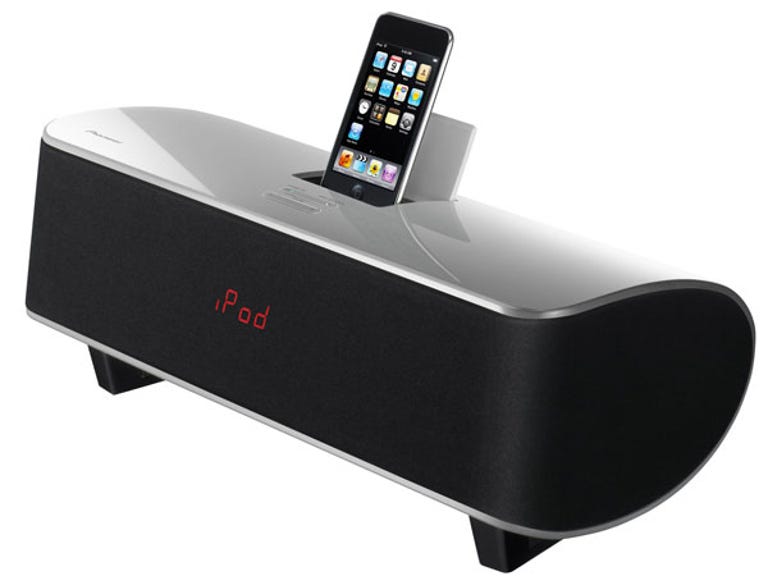 Why You Can Trust CNET
Why You Can Trust CNET Pioneer XWNAS5 review: Pioneer XWNAS5
The Pioneer XWNAS5 boasts a premium fit and finish, and while it goes loud a slight tendency for boominess spoils its hi-fi credentials.
It's difficult to know what the demand for "high-end" iPod docks is like. Though we've seen a couple come through these doors — most notably with the B&W Zeppelin, the majority of iPod docks that fly out of the doors are more of the ilk of the Soniq iM600K.
The Good
The Bad
The Bottom Line
The NAS5 is a 2.1 channel speaker and comes with a digital amplifier. The dock is of a plastic/metal construction and comes in three different colours: silver (XWNAS5S), black (XWNAS5K) and red (XWNAS5R). Its shape resembles the B&W Panoramathough it's a third of the price. The similarities continue as the Pioneer also features a red LED display; however, it's not as confusing as the one on the Panorama and also acts as a clock. The unit comes with a credit-card-style remote control, but unfortunately the layout is a bit cramped as it contains functionality not available from the main unit — like alarm settings.
As an iPod dock there aren't many features to speak of, though it does offer a couple of extra functions not offered by your run-of-the-mill unit. Firstly, the NAS5 includes its own digital-to-analog converter (DAC) which means it bypasses the on-board circuitry and replaces it with something Pioneer argues is of better quality. Secondly, it comes with both composite video for standard replay on a TV and a component connection for higher quality reproduction. Unfortunately, the component output won't work for DRM videos though, such as the Digital Copy from the Star Trek Blu-ray, but video quality was still very good via the composite output.
If you don't want to listen to your iPod there is also an on-board FM radio and an auxiliary-in as well. There is also a port on the rear for connecting an optional Bluetooth adapter, the ASBT100 (AU$119). The dock also features six different sound effects (from vinyl scratches to walks on the beach) that can be mixed into your own music. God knows why you would. Lastly, the NAS5 features a built-in DSP (Advanced Sound Retriever and Auto Level Control), plus the aforementioned alarm clock, wake-up timer and sleep timer.
If you can do without some of the frippery like LED display, FM radio, alarm clock and effects, you can save AU$200 and buy the NAS3 instead. But it only comes in white.
Given the company's insistence about the quality of its DAC, and the price (!), we were expecting a lot from the Pioneer. While it was proficient at filling a room with sound we couldn't help but feel mildly disappointed. While it's a a very good sounding deck, and miles above the Soniqs of this world, we found that the subwoofer could become a little too prominent and spoil things sonically. While acoustic music sounds great, anything with a particularly propulsive bass line, such as Nick Cave's Red Right Hand, can sound boomy and leaden. Turning down the bass level helps a little, but doesn't make the sound any more agile. Strangely Battles' Atlas was saved from boominess, despite its constant tom-tom death-dealing, and the song didn't cause the unit to shake too uncontrollably at maximum volume.
The similarly-priced B&W Zeppelin is better at dispersing sound around the room, but the Pioneer is probably better for listening to at parties with its ability to go loud and really push out the low end. In this way, it will probably appeal more to the people who know Pioneer for its in-car sound than for those who appreciate the company's hi-fi equipment.


